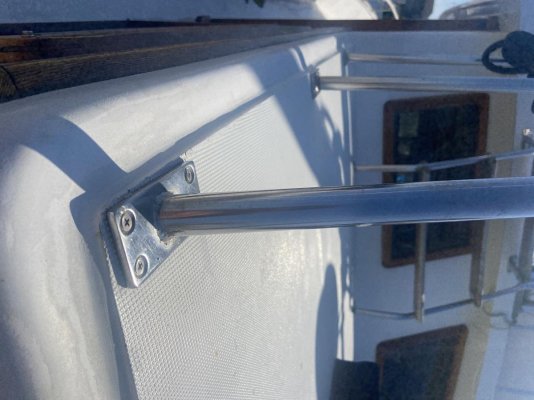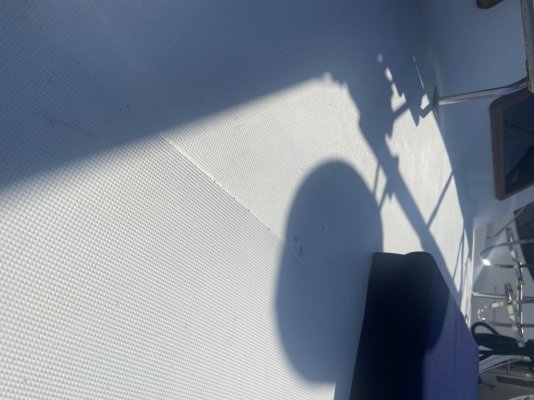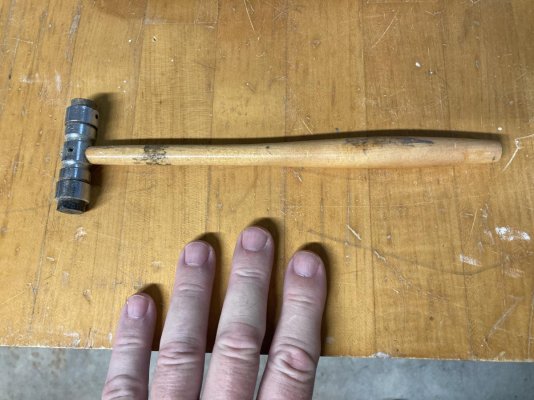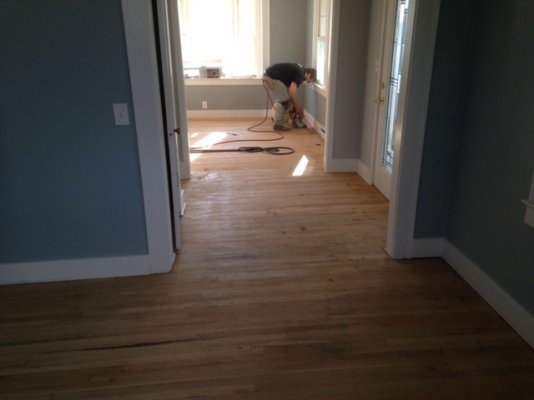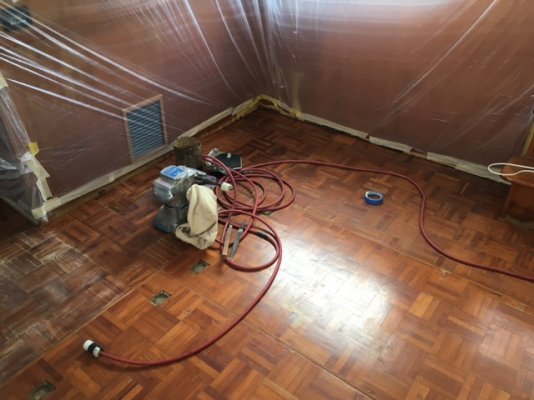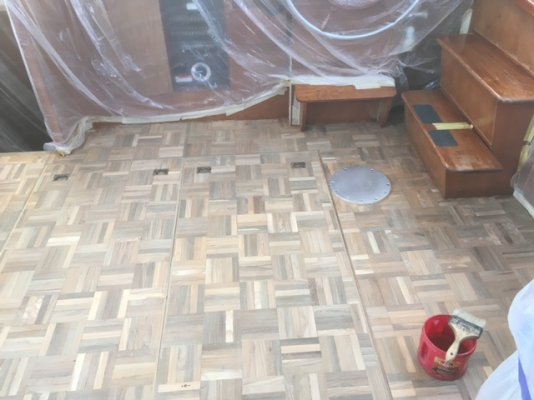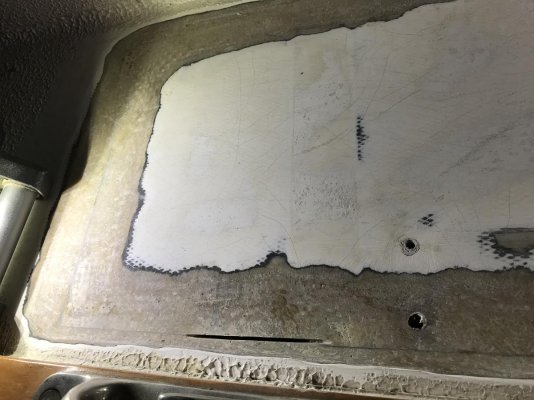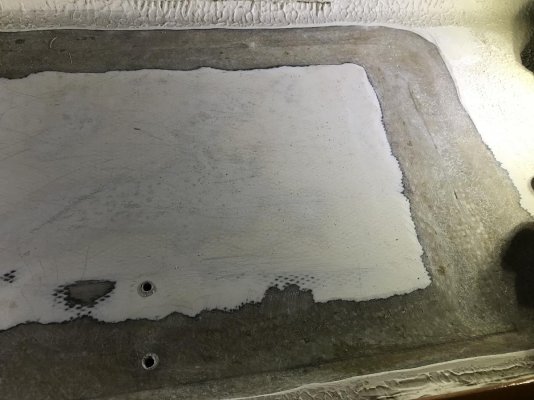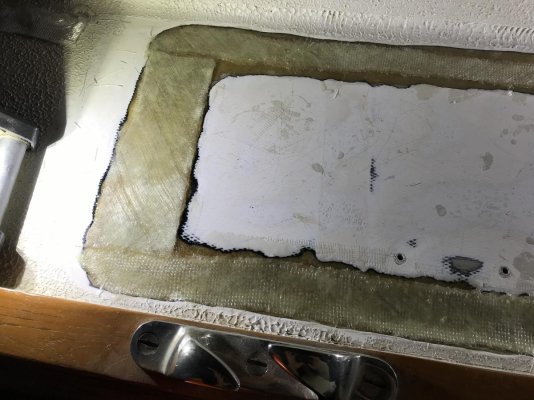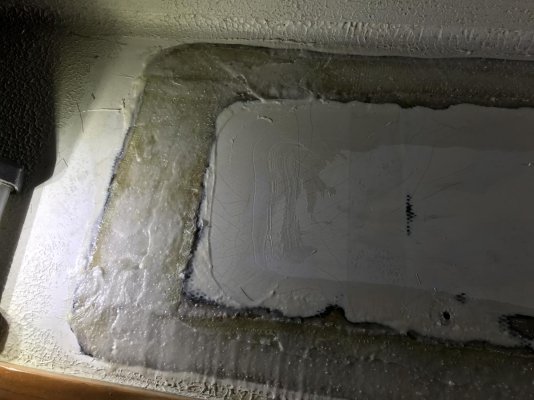Hello all. 1982 Albin 40 Double Cabin here. Does anyone know if it’s feasible for me to remove the molded non skid deck on my mid level(mezzanine?) deck? Or is this molded nonskid integrated through ad one solid piece. My questions is, can I peal the nonskid off the deck? It looks as though I can. Below are pictures. You can see how the mid level deck looks like there’s a stiffener that runs athwartship and the deck is sagging fore and aft of it. I’ll be painting non skid on a smooth surface in the future so I’m debating if I should skim over the sagging surface or rip up the deck and start under the existing top. I also don’t like that concave “router-ed” edge look.
Attachments
Last edited:

